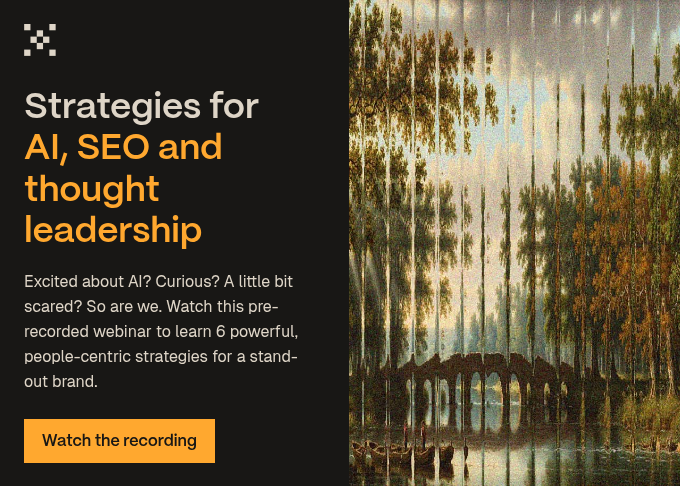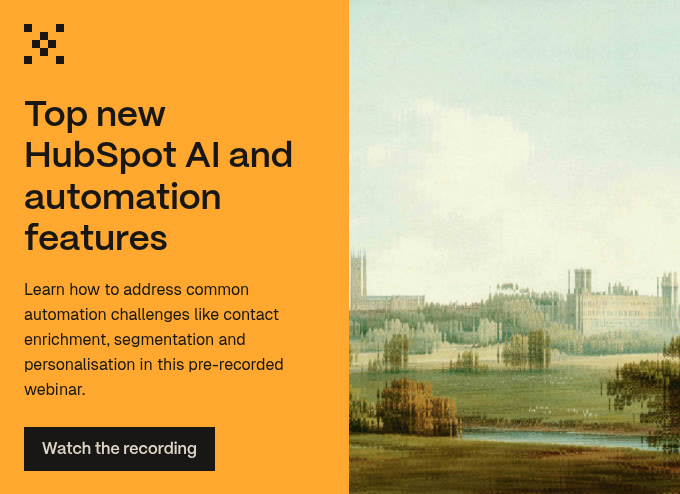In the last decade or so, marketers have clawed back the personal touch of the local shop and brought it to the digital world. Big players such as Amazon and Spotify have — impressively, it must be said — recreated the feel of the ‘hometown store’ at scale.
How?
By delivering personalised experiences to millions of people across the globe using the power of aggregated data.
As exciting as that is, we’re getting even more personal, today.
The rapid growth of AI, machine learning and data analytics technology is powering a next-gen evolution in our personalisation efforts. Hyper-personalisation: the ‘right place at the right time’ holy grail of digital commerce.
So, what does that mean, exactly?
What is hyper-personalisation?
Your bog-standard personalisation involves tailoring experiences to align with individual customer preferences and behaviours. For instance, online businesses might suggest products reflecting a customer's past purchases.
Hyper-personalisation, on the other hand, elevates this approach by using real-time behavioural data and advanced algorithms for highly customised customer experiences.
Unlike basic personalisation, which relies on historical data for tailored experiences, hyper-personalisation incorporates current context, such as location and time, for more relevant content and offers.
For example, an e-commerce site might recommend items based on past purchases (personalisation) OR suggest weather-appropriate clothing using current local conditions (hyper-personalisation).
What powers hyper-personalisation?
Hyper-personalisation combines real-time data, AI, machine learning, and predictive analytics.
Companies like Qlik and Domo analyse extensive data, learning from customer behaviours and preferences to refine recommendations. This approach integrates data analytics to understand customer needs, utilising CRM software to build detailed customer profiles.
Additionally, technologies that track location can offer area-specific experiences, while chatbots use natural language processing (NLP) to provide personalised assistance to customers.
As you gather more data, the predictive power of AI improves. At a certain point, it can proactively provide rich experiences customised to each customer's specific needs – and these experiences become even better over time.
Interested? Watch this video about the role of machine learning when executing personalisation at scale.
9 hyper-personalisation tips for B2B businesses
In his book The Person in Personalisation: The Story of How Marketing’s Most Treasured Possession Became Anything but Personal, author David Mannheim had this to say:
‘Conflict is at the heart of personalisation. It has heroes and hyperbole, myth and reality, monsters and magicians, backstory and romance, art and science. It’s loaded with a beautiful dichotomy where, on one hand, it has this perpetual hype that doesn’t seem to ever wane. And yet, on the other, doesn’t ever dare wow us into submission. Personalisation has become the Marvel Cinematic Universe. Where hype and belief remain, despite some of the more recent and subjectively terrible releases.’
It’s a rather wonderful take, and what he says is absolutely correct (about Marvel as well – sorry).
Personalisation has been over-hyped, and perhaps over-used – badly – at the expense of marketing fundamentals. Before diving into hyper-personalisation, ensure you have the basics down. Build a solid brand, understand your audience, generate word-of-mouth buzz and consistently deliver impactful customer experiences.
Saying that, if you’re ready, here’s how to get started using hyper-personalisation in your marketing:
1. Start collecting data
The foundation of hyper-personalisation is data. Collect as much relevant data as possible about your customers. This can include demographic information, browsing history, purchase history, social media interactions, and any other customer-specific information.
At Articulate, we use a single HubSpot form for all our landing pages with progressive queued fields for customer information (the email field gets replaced with one asking for a phone number, a job title and so on). That way, if someone downloads more than one of our gated content offers, we get a new bit of information about that person each time.
2. Respect privacy and consent
Always be mindful of privacy laws and customer consent. Ensure that your data collection and usage complies with regulations like GDPR and that you are transparent with customers about how their data is being used.
3. Implement advanced analytics tools
Utilise advanced analytics tools and technologies like AI and machine learning. These tools can analyse large sets of data to uncover patterns, preferences, and behaviours of individual customers, allowing you to tailor experiences.
4. Create customer segments
Based on the data collected, create detailed customer segments. These segments should be very specific and tailored to different types of customers based on their behaviours, preferences, and needs. Then, target those segments, such as with an email campaign.
5. Personalise content and offers
Use the insights gained from your data to personalise content, offers and recommendations. This could be personalised emails, tailored website experiences, customised product recommendations or individualised promotional offers.
6. Automate and optimise
Implement marketing automation tools to deliver personalised content at scale. Continuously A/B test and optimise your strategies based on customer responses and feedback.
7. Integrate across all channels
Ensure a consistent and personalised experience across all customer touchpoints, including email, social media, website and offline channels.
8. Measure and analyse your performance
Regularly measure the effectiveness of your hyper-personalisation efforts. Track metrics like engagement rates, conversion rates, customer satisfaction, and return on investment (ROI).
9. Create a feedback loop
Use customer responses to further refine and enhance personalisation efforts over time. The OODA Loop can be a useful mental model to know when to make decisions and change your strategy.
Be the hyper-personalisation pioneer in your industry
No time like the present. Sharpen your marketing strategy with these hyper-personalisation tips. When the weather’s like this, what better way is there to spend the day?

 Posted by
Sam Beddall
Posted by
Sam Beddall






